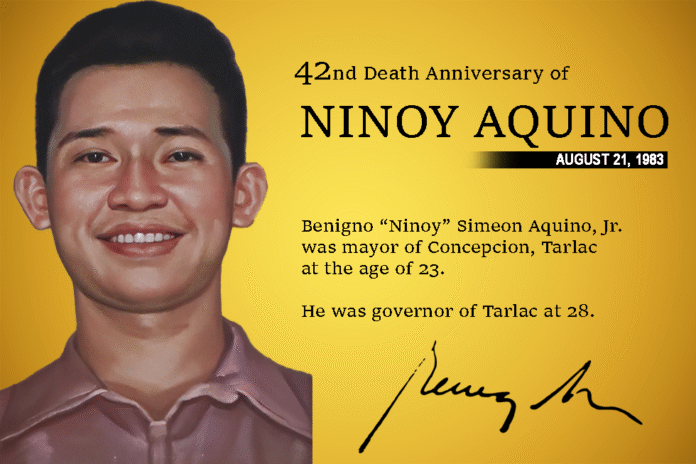CONCEPCION, Tarlac (August 21, 2025) — August 21 once marked a day of nationwide reflection on the life and martyrdom of former senator Benigno “Ninoy” Aquino, Jr., but commemorations have grown quieter in recent years, with fewer ceremonies held across the country.
Today, the most visible and consistent observance takes place in Ninoy’s hometown of Concepcion, Tarlac, where local officials and residents continue to mount a full program in his honor.
While Malacañang traditionally declared the date a special non-working holiday, national attention on the event has steadily waned. Other provinces and major cities that once organized tributes now hold only modest activities, or in some cases, none at all. Civic groups that previously staged forums and symbolic marches have also lessened their participation, citing shifting political climates and generational changes in memory.
In contrast, Concepcion has maintained its annual tradition without fail. Every August 21, local leaders, schools, and community members gather at the Ninoy Aquino Monument in front of the Presidencia Building to pay tribute to their most famous son. Wreath-laying rites, cultural performances, and recollections of Aquino’s legacy highlight the ceremonies, underscoring the town’s role as the birthplace of one of the country’s democracy icons.
For residents, keeping the memory alive is both a duty and a source of pride.
“Ninoy Aquino is not just a national hero; he is our own,” a local official said. “We feel responsible to remind the younger generation why his sacrifice mattered, not just for Tarlac but for the entire Philippines.”
This town’s Mayor Noel Villanueva, who led the commemoration, expressed gratitude to the participants and underscored Ninoy Aquino’s continuing relevance.
“Over the years, some say Ninoy has become irrelevant in the lives of Filipinos. But we in Concepcion prove otherwise — that what he fought for remains alive and meaningful, especially in the face of the challenges confronting our nation today. We must continue to embrace the spirit of his heroism,” Villanueva said in Filipino.
Aside from Concepcion, the capital city and Paniqui both held simple wreath-laying ceremonies before the statue of Aquino in their respective plazuelas.
City Councilor Anne Belmonte led the ceremony in Tarlac City, the first commemoration of its kind after years of being snubbed.
“When Ninoy said ‘The Filipino is worth dying for,’ he was calling each of us to action. Nagsalita siya hindi lamang para sa mga politiko, kundi para sa bawat mamamayang Pilipino. He was declaring that we all have a role to play in building a nation worthy of our sacrifices.
“Ninoy may be gone, but his fight continues — and it continues through us,” Belmonte said.
The contrast between Concepcion’s yearly commemoration and the dwindling observances elsewhere mirrors the broader debate over how Filipinos today remember Aquino’s role in the struggle against dictatorship.
Though the scale of national tributes has diminished, Concepcion’s continuing devotion reflects a community’s determination to keep alive the legacy of one of the country’s pivotal figures in history.


